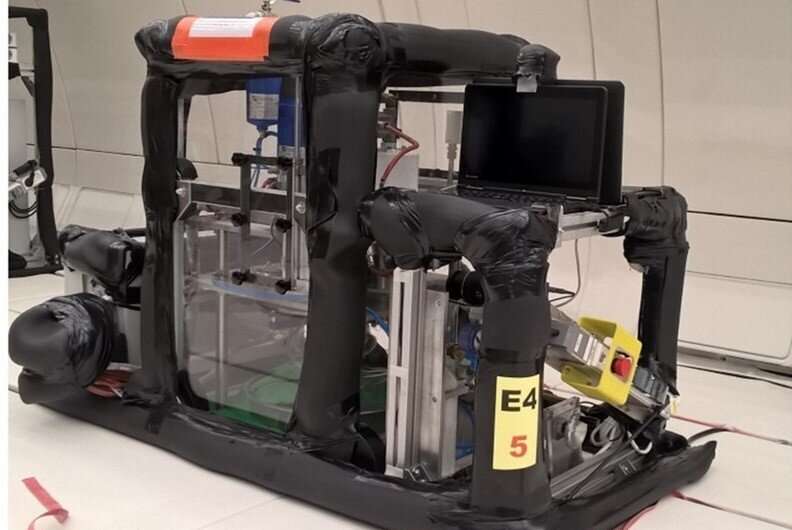This article has been reviewed according to Science X's editorial process and policies. Editors have highlighted the following attributes while ensuring the content's credibility:
fact-checked
trusted source
proofread
Is frying food possible in space?

The food we eat determines how we feel, and nothing beats a good fry-up, although in moderation of course. As we prepare for missions to the moon and on to Mars, astronauts will be happy to hear from researchers that one staple comfort food is not out of reach, even in space: fries.
ESA has been supporting research in frying cooking methods in microgravity to fill in knowledge gaps on Earth and in space. Even though frying potatoes is done everywhere around the world, it involves complex physics and chemistry, and in space everything becomes more complicated. It was no sure thing that frying would work without gravity. Without buoyancy pulling upwards, bubbles might stick to the surface of a potato, shielding the potato in a layer of steam that researchers thought might leave it undercooked and undesirable.
"Ask any chef and they will confirm that the physics and chemistry behind food is a complex and fascinating subject that bubbles over to other science disciplines," says Professor Thodoris Karapantsios from the Aristotle University of Thessaloniki, and member of the research team behind the studies. The paper was published in the Food Research International journal.
Parabolic arc
To study how microgravity influences cooking techniques such as frying, a novel experimental carousel-type apparatus was designed be safe while also operate in weightlessness. The experiments were conducted on two ESA parabolic flight campaigns, whereby an aircraft flies in repeated arcs to recreate brief moments of weightlessness.
The experiment filmed the frying process with a high-speed, high-resolution camera to capture the bubble dynamics such as growth rate, size and distribution, as well as the escape velocity from the potato, the bubbles' speed and direction of travel in the oil. The experiment measured the temperature of the boiling oil as well as temperatures inside the potato.
The experiment hardware is automated and closed for safety. It maintains a constant pressure inside the frying chamber to avoid leaks, to prevent the oil from sloshing around and to use less energy in heating.
Fries on Mars
The researchers from the University of Thessaloniki, Greece, found that shortly after the potato was added to the oil in low gravity conditions, vapor bubbles detached easily from the potato surface similarly to on Earth. While more research is needed to fine-tune some parameters, it does indicate that astronauts will be able to have more than re-hydrated food on the menu as they explore new worlds.
"Apart from nutrition and comfort, studying the process of frying in space could also lead to advancements in various fields, from traditional boiling to producing hydrogen from solar energy in microgravity," concludes John Lioumbas from the team.
More information: John S. Lioumbas et al, Is frying possible in space?, Food Research International (2022). DOI: 10.1016/j.foodres.2022.112249
Provided by European Space Agency





















